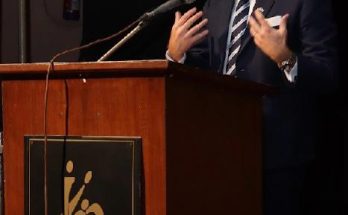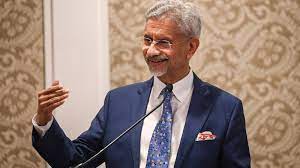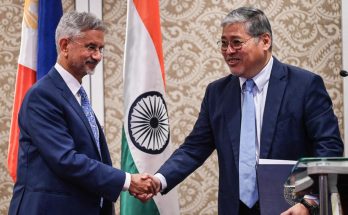Prime Minister Manmohan Singh’s forthcoming visit to Japan in the last week of May to meet his Japanese counterpart Shinzo Abe at the annual summit will be one more significant step in the direction of strengthening and consolidating this burgeoning multi-faceted bilateral partnership. Dr Singh was scheduled to make a visit to Tokyo last December, but it was postponed due to the sudden announcement of the Lower House elections in Japan.
Ever since Prime Minister Abe came back to power in December 2012 with a massive majority in the lower house, he has been showing a great deal of vigour and drive for revitalising Japan’s economy under the rubric of ‘Abenomics’. He has correctly understood that unless the stagnant economy of Japan is revived and is put on a robust trajectory, his country cannot hope to have any crucial say in the rapidly changing geopolitical situation of the Asia-Pacific region. The effectiveness of its regional and global diplomacy would be closely related to how quickly Japan is able to regain its economic strength. Similarly, he has also perceived clearly that Japan’s position, especially in the Asia-Pacific region, had suffered in recent years mainly because of political instability at home which was reflected in weak governance marked by frequent changes in the post of prime minister. Now Abe’s strong position in the Lower House and prospects of gaining a majority in the July Upper House election have given him a new hope to consolidate his political strength and draw up a fairly long-term political and economic agenda that would instill confidence in Japan’s allies and partners.
It is in this context of an emerging stable Abe administration that one has to look at Manmohan Singh’s visit to Japan. But Abe is not a stranger to the Indian prime minister. They had taken a part in two summit meetings earlier in 2006 and 2007. In 2006, Dr Singh visited Japan and signed a joint communique with Abe titled, ‘Towards Japan-India Strategic and Global Partnership’. The title carried considerable significance in that the two leaders added ‘strategic’ to their global partnership to clearly project the unfolding new dimensions of their partnership. The 2007 joint statement, which was issued in New Delhi at the time of Abe’s visit to India, carried a still further expanded title, ‘The Roadmap for New Dimensions to the Strategic and Global Partnership between Japan and India’. These two summits contributed a great deal to the evolution of the multi-dimensional nature of the bilateral partnership as we see it today. It is also useful to remember that in 2007, Abe addressed the joint session of the Indian parliament and talked about the Indo-Japanese partnership in the context of a broader Asia emerging at the confluence of the Pacific and Indian Oceans.
Territorial frictions
The visit of the Indian prime minister comes at a time when both countries are faced with serious territorial frictions with China. The latest Delhi-Beijing standoff arising out of China’s totally unacceptable intrusion into the Indian territories inside the Line of Actual Control (LAC) demonstrated the unpredictable nature of their bilateral relations. China agreed to withdraw to its earlier position only after causing considerable tension followed by India’s rather tough response. But China did not choose only India for this kind of treatment. Japan has been facing the fury of China’s pressures in the maritime sphere, particularly since 2010 when a Chinese ship rammed into a Japanese coast guard ship. China’s relentless pursuit of its ‘claims’ to the Senkaku islands (which Beijing calls Diaoyou) became far more intense after September 2012 when the Japanese government purchased three of the island chains. Almost on a daily basis, China’s surveillance ships intrude into the Japanese territorial waters around the islands chain and there have also been frequent cases of the Chinese air force violating the air space of Japan.
Freedom of navigation
Both leaders will review at the summit some of the major developments in East Asia, including China’s assertive maritime postures and North Korea’s nuclear weapons and missile programmes. Both India and Japan share common interests in seeing that the freedom of navigation in the Indo-Pacific region is properly maintained. Nearly 90 per cent of their external trade is sea-borne and about 75 per cent of their energy needs are also carried by sea. China, South Korea and ASEAN countries also depend on the safety of the sea lanes for their trade and economic survival. In the last week of March 2013, India’s foreign minister Salman Khurshid met his Japanese counterpart Fumio Kishida at the seventh bilateral strategic dialogue and stressed that India would stand by Japan to ensure the freedom of navigation on the high seas. This subject will again crop up in the summit deliberations and both leaders will do well to reiterate their strong positions on the need to maintain the freedom of navigation on the high seas.
Civil nuclear cooperation
Bilateral cooperation in the peaceful uses of nuclear energy is an important issue that will draw the attention of the two leaders at the summit. When the Bush administration was negotiating the civil nuclear agreement with New Delhi, Japan, as a member of the Nuclear Suppliers Group (NSG), supported the landmark Indo-US civil nuclear agreement which extended a specific exemption to India. But after 2008, Japan itself was supposed to enter into a bilateral agreement with New Delhi for allowing its nuclear technology to be used in India. Three rounds of negotiations between the two did not produce any results as Japan insisted on a categorical assurance from India that it would not conduct any more nuclear tests. But India saw no reason for making a fresh assurance apart from what it had already given to the US at the time of signing the agreement. Moreover, it also strongly believed that its impeccable non-proliferation record is good enough for bilateral nuclear cooperation. In the meantime, the Fukushima tragedy of March 11, 2011 completely changed the situation and the intense anti-nuclear movement in Japan impeded any further progress in the bilateral negotiations. Even so, when Japanese Prime Minister Yoshihiko Noda came to India for the annual summit meeting in December 2011, he assured India that Japan was still keeping its doors open for negotiations. But now with the return of the Liberal Democratic Party to power, Abe has announced a new policy of reopening the closed reactors at home and exporting civilian nuclear technologies abroad. He has recently signed agreements with Turkey and the UAE for extending assistance to construct several reactors. Abe is exploring the prospects of Japanese companies building similar reactors in some of the East European countries like Czech Republic, Poland, Slovakia and Hungary. He is expected to visit these countries in June for that purpose. One has to see the prospects of the Indo-Japanese agreement in the context of this policy change in Japan. Since Abe is politically strong and is in a mood to promote the bilateral ties, he will certainly try to support an early agreement with India. But in that process, he cannot totally ignore the strong, popular anti-nuclear sentiments of his people. What ultimately matters is whether Abe, given his image as a strong friend of India, has enough political will to push the negotiations to a successful settlement. Seeing Abe’s assertive mood in other spheres like constitutional amendments, and given his friendly disposition to India, one cannot rule out any surprises.
The economic factor
There are a number of other issues, chiefly economic, that would draw the attention of the two leaders such as exploring the possibilities of introducing Japan’s Shinkansen – fast moving bullet trains – in India; the ongoing Delhi-Mumbai Freight Corridor and Delhi Mumbai Industrial Corridor projects; the Chennai-Bangalore Industrial Corridor Project; progress of the comprehensive economic partnership agreement (CEPA, 2011) and expansion of trade and investment.
(Prof K.V. Kesavan is a distinguished fellow at Observer Research Foundation, New Delhi. Currently, he is a Public Policy Scholar at the Woodrow Wilson International Center for Scholars, Washington D.C.)
Author Profile
Latest entries
 DiplomacyJanuary 12, 2015Sushma Swaraj’s visit to South Korea and the way ahead
DiplomacyJanuary 12, 2015Sushma Swaraj’s visit to South Korea and the way ahead DiplomacyDecember 12, 2014Will the Japanese PM be able to win ‘Abenomics’ poll test?
DiplomacyDecember 12, 2014Will the Japanese PM be able to win ‘Abenomics’ poll test? China ConnectOctober 10, 2014Japan and China seeking a limited truce?
China ConnectOctober 10, 2014Japan and China seeking a limited truce? DiplomacyAugust 23, 2014Modi-Abe Summit: Need for a breakthrough
DiplomacyAugust 23, 2014Modi-Abe Summit: Need for a breakthrough








